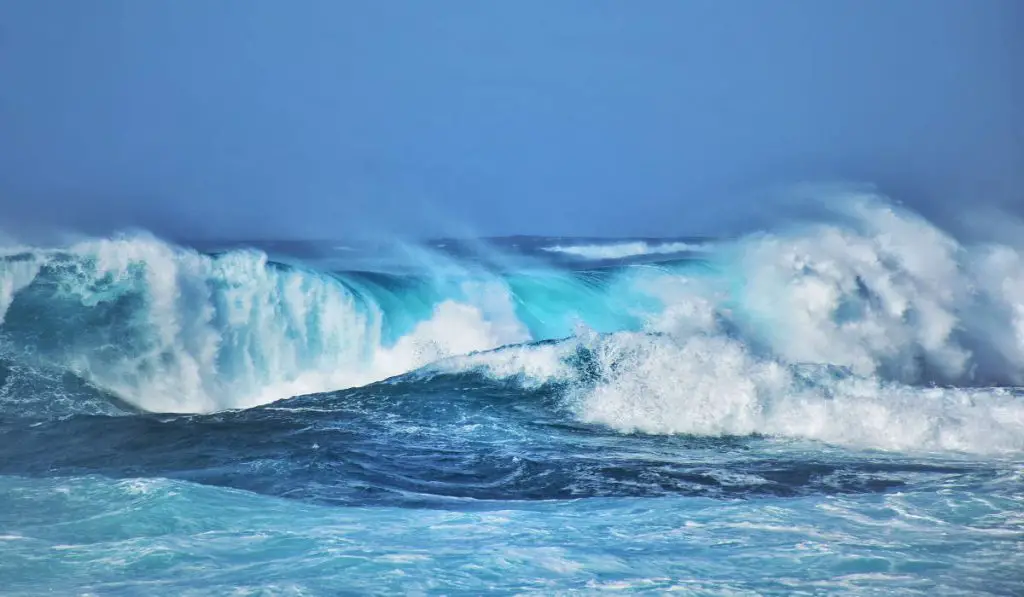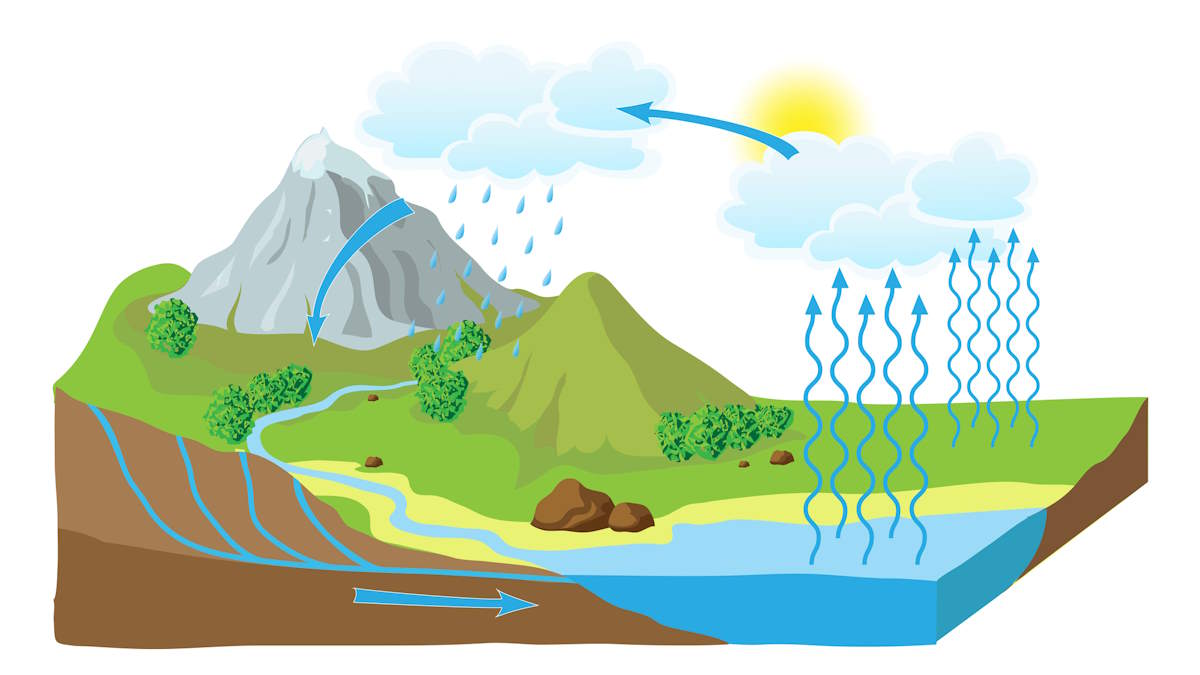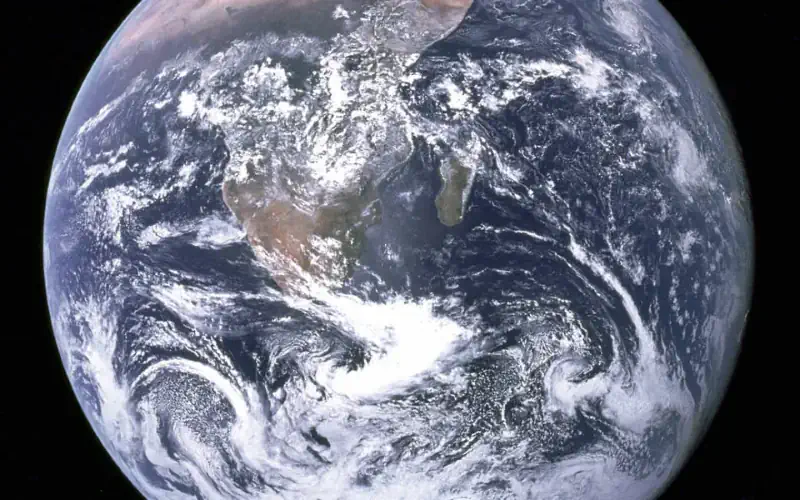The water cycle, also known as the hydrologic cycle, is the continuous process that describes the movement of water on, above, and below the Earth’s surface. It begins with evaporation, where heat from the sun transforms surface water from oceans, lakes, and rivers into water vapor. This vapor rises into the atmosphere, cools, and condenses to form clouds in a process called condensation. Precipitation follows, where water droplets in clouds combine and fall back to Earth as rain, snow, or other forms of precipitation. Some of this water infiltrates the ground, replenishing underground aquifers, while the rest flows into rivers and oceans, restarting the cycle.
The Water Cycle: A Continuous Journey of Transformation and Movement
Water, the elemental force of life, permeates every facet of Earth. Its vast presence is evident in the depths of the oceans, across sprawling landmasses, and high up in the swirling atmosphere. The fascinating journey that this vital resource undertakes is guided by a sophisticated, ceaseless mechanism known as the water cycle. It is this cycle that maps out the intricate routes, delineating the grand voyage that each molecule of water embarks on as it traverses around our planet. Far from being a simple path, the water cycle represents a complex interplay of physical processes that governs the constant motion and transformation of water in our global ecosystem.
Water can be found in all three states of matter on Earth – as a solid, liquid, and gas. You can observe it in its liquid state, not only in the expansive oceans, rivers, lakes, and streams but also hidden beneath the surface in the soil and vast underground reservoirs. As a solid, it forms ice, prevalent in glaciers, as a blanket of snow, and predominantly caps the North and South Poles. The gaseous state of water exists as water vapor, invisibly interspersed in the Earth’s atmosphere.
Now, how does this life-sustaining molecule traverse from the frozen expanse of a glacier to the vastness of an ocean and then ascend into a cloud? That’s where the water cycle comes in.

Powered by the Sun’s heat, glaciers and snow gradually transform into liquid water. This meltwater embarks on a journey, finding its way into oceans, lakes, and streams, while some seeps into the soil, providing critical hydration for plants and replenishing the groundwater we depend on for drinking.
Snow that accumulates on glaciers during the winter months typically compensates for the water lost through summer melting. However, due to the gradual warming of our planet, many of today’s glaciers are experiencing a net loss in ice volume, resulting in a steady decline in their size over time.
But how does water ascend into the sky? This occurs predominantly through two processes:
- First, the Sun’s heat instigates evaporation from bodies of water like oceans, lakes, and streams. This process transforms liquid water at the Earth’s surface into water vapor, which disperses into our atmosphere.
- Second, water is released from plants and trees into the atmosphere through a process known as transpiration.
As the warmed water vapor ascends through the cooler regions of the Earth’s atmosphere, it undergoes condensation. This process involves the water vapor cooling down and reverting back into liquid water, forming clouds.
When these clouds become saturated with water, the excess liquid falls back to Earth in the form of rain or snow – a process we refer to as precipitation. This precipitation replenishes lakes and streams, effectively setting the stage for the entire cycle to commence anew.

Related: How much water is on Earth?
Understanding the Significance of the Water Cycle: Why Does It Matter?
The water cycle holds a crucial position in our lives and the environment due to the indispensable role water plays in sustaining all forms of life. Every living organism, from the tiniest bacteria to the largest mammals, requires water to survive and thrive. It is an integral component of our bodily functions, agricultural practices, and industrial processes, and is central to the very existence and health of our planet’s ecosystems.
However, the relevance of the water cycle extends beyond simply providing hydration. The water cycle is essentially Earth’s natural filtration system. Through processes such as evaporation and precipitation, water is purified and circulated across different geographical areas. This process replenishes freshwater sources, removes harmful substances, and facilitates the transport of nutrients essential for life. It’s a powerful, self-sustaining mechanism that helps maintain the balance of our planet’s water resources.
Moreover, the water cycle plays a pivotal role in regulating Earth’s climate. The transformation of water between its solid, liquid, and gaseous states influences global weather patterns, temperature distributions, and overall climatic conditions. As such, understanding the water cycle is key to predicting the weather, managing water resources, and planning for climate change impacts. It’s not just about sustaining life today; comprehending the water cycle is crucial for ensuring the continued vitality of Earth’s biosphere in the future.
Sources
- What Is the Water Cycle? on the NASA Climate Kids website
- Water cycle on Wikipedia
- The Water Cycle on the NASA Precipitation Education website
- How Many Elephants are Left in the World in 2025? - August 17, 2025
- Moon Landings: All-Time List [1966-2025] - February 2, 2025
- What Is Max-Q and Why Is It Important During Rocket Launches? - January 16, 2025

